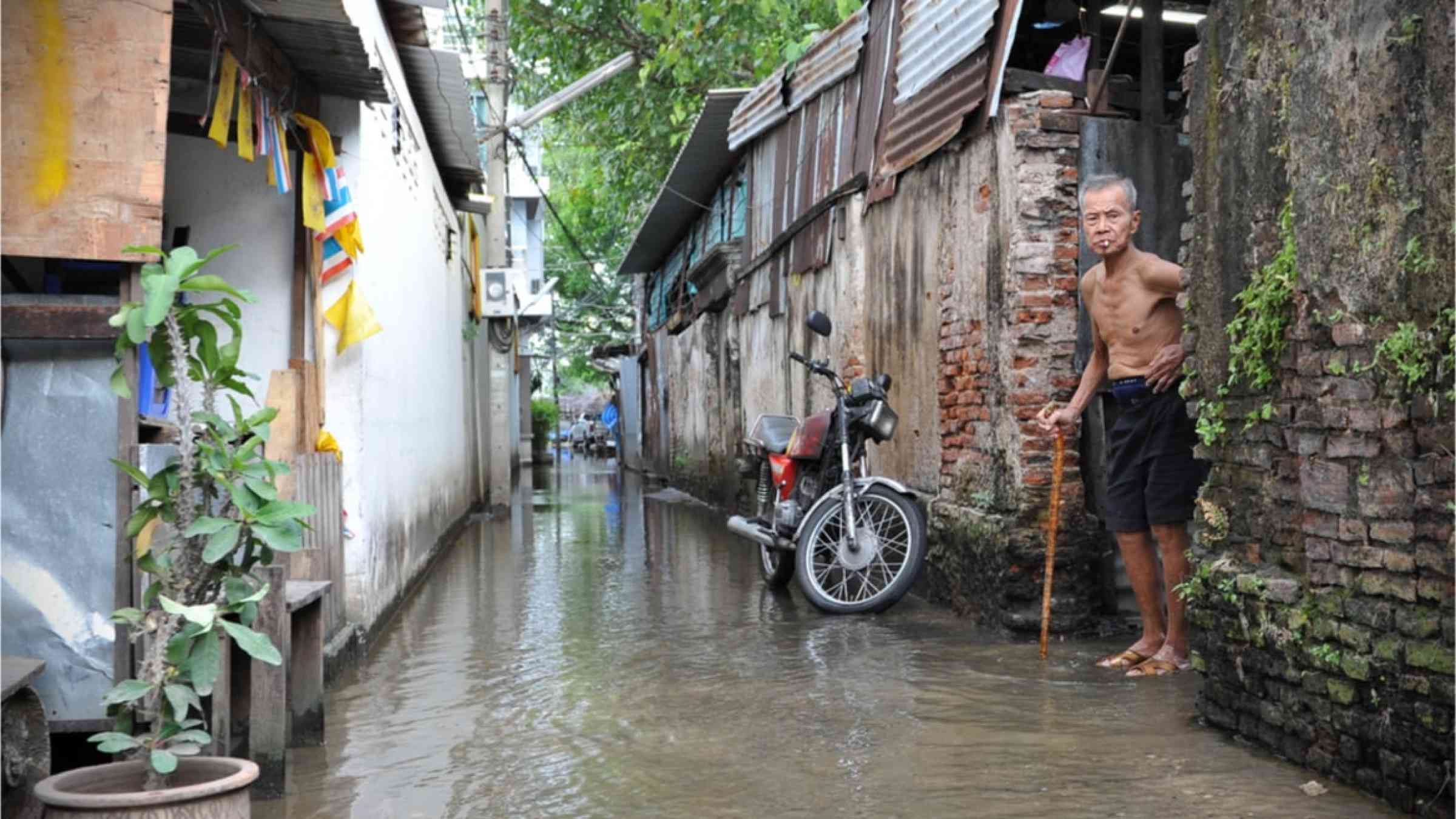Building the evidence for more effective disaster risk reduction

After a long hiatus due to the COVID crises, governments will come together in Bali this week to discuss progress on the implementation of the Sendai Framework for Disaster Risk Reduction. Organized by the UN Office for Disaster Risk Reduction (UNDRR) and hosted by the Government of Indonesia, the seventh session of the Global Platform for Disaster Risk Reduction comes at a crucial time: while countries struggle to address the compounded threats of food, fuel and financial insecurity in the midst of a pandemic, many must also still contend with the threat of natural hazards and the terrible costs they exact.
Almost 25 million people were internally displaced by natural hazards in 2021. Climate change is exacerbating the risks to lives and livelihoods from more severe droughts, floods, and storms. As with the shocks from the pandemic and the Ukraine crisis, it is poorer countries and their populations that are most vulnerable to the impacts of natural hazards. Building resilience to the risks posed by natural hazards remains vital for protecting people and preserving development gains and creating the conditions for sustainable development. An upcoming evaluation from the Independent Evaluation Group will offer an assessment of how and how well the World Bank has helped countries address risks of disasters caused by natural hazards.
Disaster risk reduction (DRR) is at the core of the World Bank’s approach to support green, resilient, and inclusive development, and in particular to support countries to address climate change through adaptation and resilience. The World Bank has supported hundreds of projects supporting DRR, including through physical investments in risk mitigation and resilient infrastructure, support for policy strategy and institutional reform, disaster preparedness including early warning systems, and disaster risk finance. The evaluation – scheduled to be released in October of this year ahead of the Annual Meetings of the IMF and World Bank Group – seeks to identify the factors that contributed to success and failure, as lessons to build on for more effective support to countries to reduce disaster risk from natural hazards.
Underinvestment in DRR has been a global challenge. Along with a shift in mindset from disaster recovery to risk reduction, DRR requires a complex combination of building institutional capacities, the design of new policies and new investments. The evaluation undertook a series of case studies on engagements where the World Bank sought to use its upstream analytics and technical assistance, its convening power and partnerships with others, and its lending instruments to catalyze action on DRR. The goal was to zero in on the ingredients for especially effective approaches and glean lessons to guide future engagement with countries on DRR.
The evaluation also raises key questions about the extent to which the World Bank has targeted risk reduction support to the most serious hazards in each country, and the way the World Bank has influenced disaster vulnerable countries to undertake disaster risk reduction activities. The assessment also examines the way in which the World Bank’s t approaches have evolved in line with identified good practices, and how effective it has been in reducing disaster risk- including for the groups who are disproportionately vulnerable.
Understanding the effectiveness of the World Bank, or any institution’s contribution to DRR, is no small task. DRR outcomes are inherently difficult to measure because they are a reduction in the negative effects of a probabilistic future shock. Avoided losses cannot be directly measured. Reduced expected mortality and damage are a function of both the probability distribution of natural hazards of varying intensities and the effectiveness of risk reduction activities. Yet the development case for DRR has never been more vital, even as countries face a daunting array of overlapping risks.
While the upcoming evaluation looks deeply at disasters caused by natural hazards and builds the evidence for what works in motivating effective efforts to minimize their potential impacts, its findings should also be relevant for the broader and integrated efforts needed to address multiple and compound disaster risks, and support resilient development.